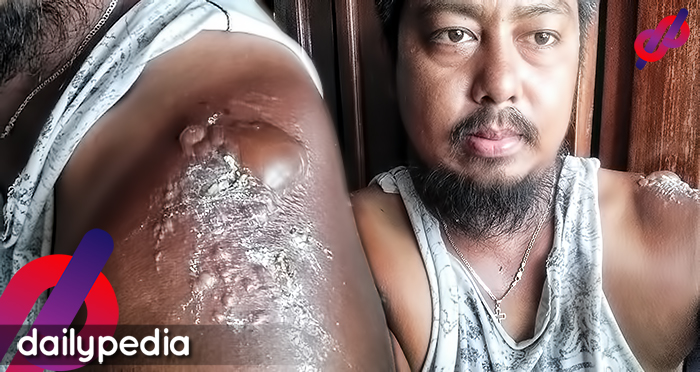- A netizen posted pictures of the burns he suffered while out riding during a heat index
- Heat index is what people ‘perceive or feel as the temperature affecting their body’
- PAGASA advised the public to be on guard against heat stroke and other effects of a surging heat index
A Facebook user shared online his current predicament after riding out in the sun only wearing sando, not knowing that the heat index was 51.7 degrees Celsius in their area last Tuesday.

Netizen Jhong Alfonso posted photos of his shoulder appearing to suffer 2nd degree burns, showing his skin turn red in color, blistered, and swollen. He recounted that he was not even riding an hour under the blazing heat when he contracted the burns. He mentioned feeling like he has been poured with boiling oil.
“Kunting ingat mga kagulong… safety first (sa) (katawan) natin,” cautioned Alfonso to other social media users and riders.
Weather forecaster Philippine Atmospheric, Geophysical, and Astronomical Services Administration (PAGASA) advised the public to be on guard against heat stroke and other effects of a surging heat index.
According to the state weather bureau, the heat index is what people “perceive or feel as the temperature affecting their body.”
In actuality, it is the temperature affecting the human body amid relative humidity and air temperature and is normally higher than actual air temperature.
https://www.facebook.com/jhong.alfonso/posts/2033464156776067
And this is expected of the dry season when temperatures soar in the country.
State meteorologists PAGASA categorizes four levels for the heat index:
- Caution is when the temperature reaches between 27 to 32 degrees Celsius and “fatigue is possible (to the public) with prolonged exposure and activity. Continuing activity could result to heat cramps.”
- Extreme caution is when the temperature reaches between 32 to 41 degrees Celsius and people are likely to experience “heat cramps and heat exhaustion” and even heat stroke with continued activities.
- Danger is when the temperature reaches between 41 to 54 degrees Celsius and the state agency warns that “heat cramps and heat exhaustion are likely” and heat stroke is “probable with continued activity.”
- Extreme danger is for temperature over 54 degrees Celsius and the public may experience heat stroke at this level.
In a report by Rappler, PAGASA gave the following tips for people to protect themselves against risks brought by the heat:
- Stay indoors as much as possible. If air-conditioning is not available, stay on the lowest floor, out of the sunshine.
- Wear lightweight and light-colored clothing—light colors reflect the sun’s energy while dark colors absorb it.
- Drink plenty of water regularly to keep the body cool. It is the safest liquid to drink during heat emergencies.
- Avoid drinking liquor because it dehydrates the body.
- Eat small meals, but eat more often.
- Avoid eating foods high in protein which can increase metabolic heat.



